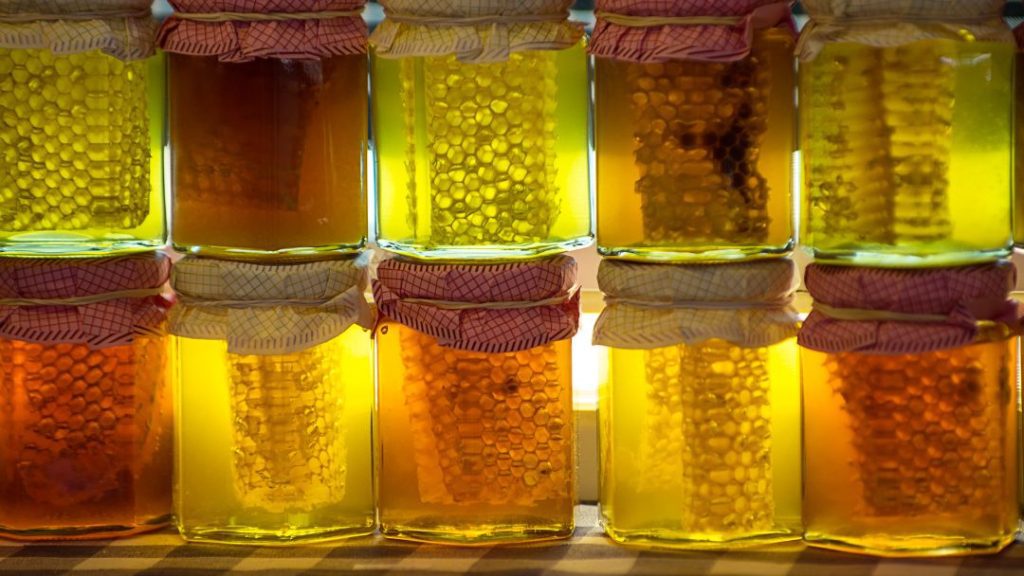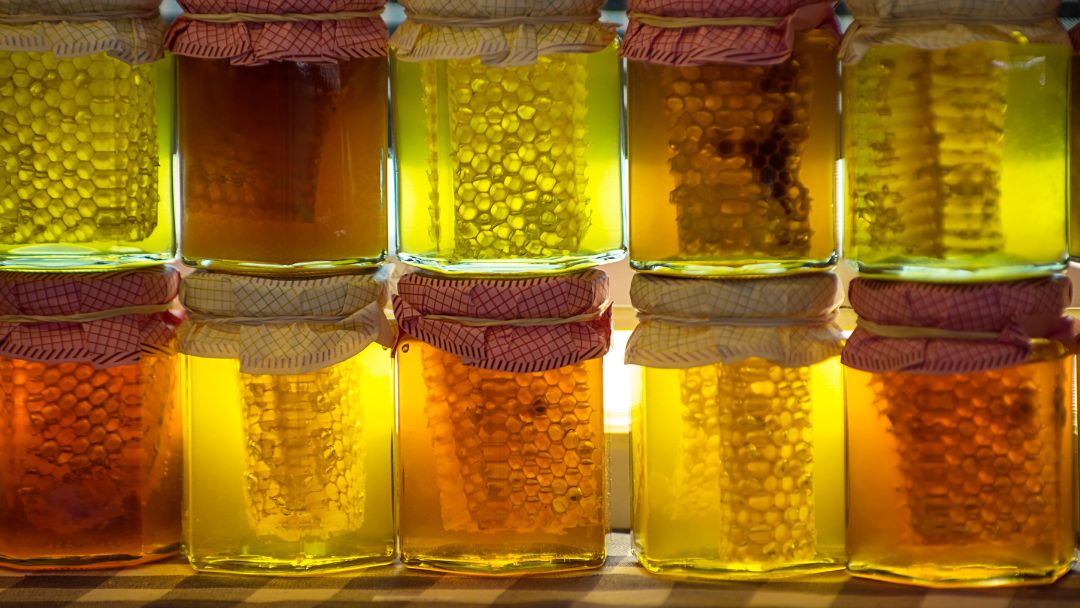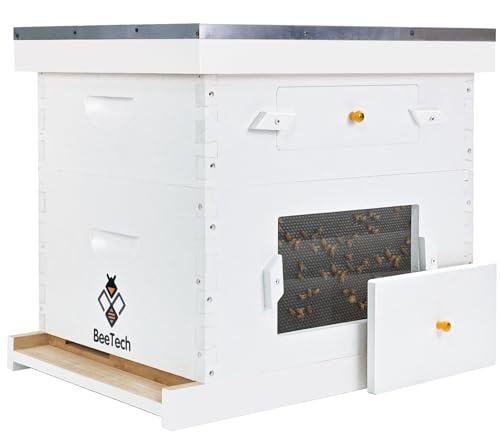Selling Honey: Boost Your Profits
Selling honey involves understanding the market demand and creating a strong marketing strategy to attract customers.
In this comprehensive guide, we will explore all the important aspects of selling honey, including sourcing high-quality honey, packaging and labeling, pricing strategies, and effective sales channels to maximize your profits.
So, let’s dive in and learn all you need to know about selling honey and establishing a successful honey business.
The Basics Of Beekeeping
Beekeeping is a fascinating and rewarding hobby that not only allows you to create your delicious honey but also contributes to the preservation of our precious bee population.
Whether you’re a beginner or an experienced beekeeper, understanding the key components of beekeeping is essential to ensure the success of your colonies.
Understanding The Key Components Of Beekeeping
Before delving into the world of beekeeping, it’s important to grasp the key components that make this activity thrive.
The primary element revolves around the honey bees themselves, a social insect species that live in organized colonies. Each colony is composed of three distinct castes – the queen bee, worker bees, and drones.
The queen bee is responsible for laying eggs, while the worker bees handle various tasks such as foraging for nectar and pollen, building honeycombs, and caring for the brood. Drones, on the other hand, exist solely for mating purposes.
Choosing The Right Location For Your Beehives
When it comes to beekeeping, location is everything. Bees thrive in areas where they have access to a diverse range of flowers, ensuring a constant supply of nectar and pollen.
To select the ideal location for your beehives, consider the following factors:
- Abundant Forage: Look for areas with a wide variety of flowering plants that bloom throughout the year. This ensures your bees have a continuous food source.
- Avoid Pesticides: Stay away from areas heavily treated with pesticides, as these chemicals can harm bees and impact the quality of honey.
- Protection from Elements: Choose a location shielded from strong winds and excessive sunlight. This helps maintain optimal hive temperature and protects the bees from inclement weather.
- Accessibility: Ensure that the location is easily accessible for you to visit and manage your hives, minimizing disturbance to the bees.
- Water Source: Bees need a nearby water source, such as a pond or stream, for hydration. Consider this when selecting your hive location.
Equipment And Supplies Needed For Successful Beekeeping
To set yourself up for successful beekeeping, you’ll need the right equipment and supplies. Here’s a quick rundown of what you’ll require to maintain healthy and productive hives:
| Equipment/Supply | Description |
|---|---|
| Beehives | A soft-bristled brush is used to gently remove bees from frames and other hive components. |
| Hive Tool | A handheld tool used for prying open hives, lifting frames, and scraping off excess propolis. |
| Smoker | A device that produces smoke, used to calm bees during inspections and hive manipulations. |
| Beekeeping Suit | A protective suit designed to shield you from bee stings, including a jacket, veil, and gloves. |
| Bee Brush | A machine is used to extract honey from frames, separating it from the comb for harvesting. |
| Feeder | A device that provides supplemental feeding to your colonies, especially during periods of low nectar flow. |
| Honey Extractor | A machine used to extract honey from frames, separating it from the comb for harvesting. |
| Protective Gear | Additional safety gear such as gloves, boots, and pants to enhance your protection while working with bees. |
Equipping yourself with these essential items ensures you’re well-prepared to take care of your bees and harvest your golden honey.

Mastering Beekeeping Techniques
Beekeeping is a fascinating and rewarding practice that allows you to harvest your delicious honey. T
o excel in beekeeping, it’s essential to master various techniques that ensure healthy hive management and optimal honey production.
Proper Hive Management And Maintenance
Maintaining a healthy hive is essential for successful honey production. Here are some crucial aspects of hive management and maintenance:
- Regular inspections: Conduct routine inspections to monitor the health of your bees, check for signs of disease or pests, and assess the overall condition of the hive.
- Providing adequate space: As the colony grows, it’s necessary to add additional supers to accommodate the expanding population. This prevents overcrowding, which can lead to swarming.
- Maintaining proper ventilation: Bees require good airflow inside the hive to regulate temperature and humidity. Ensure the hive has proper ventilation to prevent moisture buildup and mold growth.
- Pest control measures: Be vigilant in protecting your hive against common pests, such as varroa mites and wax moths. Implement appropriate control methods to prevent infestations.
Different Types Of Bees And Their Roles In Honey Production
Bees play different roles within the colony, each contributing to the honey production process. Understanding these roles can help you better manage your hive. Here are the key types of bees and their roles:
| Bee Type | Role |
|---|---|
| Queen Bee | The queen bee is the mother of the colony, responsible for laying eggs and maintaining population growth. |
| Worker Bees | Worker bees are females that perform various tasks such as foraging for nectar, producing honey, building comb, and caring for the brood. |
| Drone Bees | Drone bees are males whose primary role is to mate with the queen. They do not have stingers and are not involved in foraging or honey production. |
Understanding the different roles of bees in honey production enables you to recognize and address any issues that may arise within the hive.
Bee-friendly Practices For Optimal Honey Production
To promote optimal honey production, it’s crucial to adopt bee-friendly practices that support the well-being of your bees. Here are some practices to consider:
- Planting bee-friendly vegetation: Create a diverse and abundant source of nectar and pollen by planting flowers, herbs, and trees that bees love, such as lavender, wildflowers, and fruit trees.
- Avoiding chemical pesticides: Minimize or eliminate the use of chemical pesticides in your beekeeping practices. These substances can harm bees and contaminate honey.
- Providing a water source: Ensure your bees have access to clean water near the hive. A shallow water source, like a birdbath or water tray, can attract and provide hydration for the bees.
- Regularly replacing old frames: Over time, frames can become worn or contaminated. Replace them as needed to maintain a clean and healthy environment for the bees.
By implementing these bee-friendly practices, you create an environment that supports the health and productivity of your honey-producing bees.
Harvesting And Extracting Honey
Harvesting and extracting honey is one of the most crucial and exciting steps for any beekeeper. It represents the culmination of months of hard work and care, resulting in delicious liquid gold that can be enjoyed by people all over the world.
Knowing When And How To Harvest Honey
Harvesting honey at the right time is essential to ensure its quality and flavor. While the ideal time for harvesting honey can vary depending on factors such as climate and floral sources, there are some general guidelines you can follow.
- Monitor honey production: Regularly check your honey supers to determine when they are filled and capped, indicating that the honey is ready for harvest.
- Check moisture content: Honey with a moisture content above 18% can ferment or spoil, so make sure to use a hydrometer to measure the moisture content before harvesting.
- Consider local conditions: Beekeepers in different regions may have specific recommendations for when to harvest honey, taking into account local flora and weather patterns. Consult experienced beekeepers in your area for advice.
Once you have determined that it’s time to harvest your honey, it’s important to follow the proper harvesting techniques to ensure a successful and efficient extraction process.
Step-by-step Guide To Honey Extraction
Extracting honey from the honeycomb can be accomplished using various methods, but one of the most common techniques is using an extractor.
Here’s a step-by-step guide to honey extraction:
- Prepare your tools: Make sure you have all the necessary equipment, including an extractor, uncapping knife or roller, buckets, and sieves. Also, ensure your work area is clean and free of any contaminants.
- Uncapping the frames: Using the uncapping knife or roller, carefully remove the wax cappings from the honeycomb frames, exposing the honey.
- Place frames in the extractor: Load the uncapped frames into the extractor, making sure not to overload them. An extractor works by spinning the frames, causing the honey to be flung out of the comb’s cells.
- Extract the honey: Begin spinning the extractor at a slow speed, gradually increasing it. This process will extract the honey from the frames, which will be collected at the bottom of the extractor.
- Filter and store the honey: After extraction, strain the honey through a sieve or cheesecloth to remove any impurities or wax particles. Then, transfer the honey into clean, dry containers for storage.
Proper Storage And Packaging Techniques For Honey
Proper storage and packaging are vital to maintain the flavor, texture, and overall quality of your harvested honey.
To ensure that your honey retains its deliciousness for as long as possible, follow these storage and packaging techniques:
- Use clean containers: Make sure the containers you use for storing honey are clean, dry, and free from any residue or odors that can affect the taste.
- Store in a cool, dark place: Keep your honey away from direct sunlight and in a cool environment to prevent color and flavor degradation.
- Avoid moisture and temperature fluctuations: Moisture and temperature changes can cause honey to ferment or crystalize. Store honey in an airtight container to prevent moisture absorption.
- Label your honey: Properly labeling your honey with the harvest date, floral source, and any other relevant information will not only help you keep track of different batches but also provide valuable information to potential buyers.
By following these storage and packaging techniques, you can ensure that your honey remains fresh, delicious, and market-ready.
Marketing And Selling Honey
When it comes to marketing and selling honey, it is crucial to develop a strong brand identity that resonates with your target market.
This can be achieved by understanding consumer preferences and utilizing effective strategies for marketing and distribution.
Developing A Brand Identity For Your Honey Business
Developing a distinctive brand identity is essential for standing out in the competitive honey market.
Your brand should convey the unique characteristics of your honey, such as its flavor profile, quality, and sustainability practices.
To create a strong brand identity, consider the following:
- Choose a catchy and memorable business name that reflects the essence of your honey. Ensure that it is easy to pronounce, spell, and search for online.
- Create an appealing logo and visually appealing packaging design that captures the attention of consumers. Use colors and images that evoke the natural and wholesome qualities of honey.
- Craft a compelling brand story that highlights your farming practices, beekeeping techniques, and commitment to producing high-quality honey.
- Engage with your customers through social media platforms, blog posts, and videos. Share behind-the-scenes glimpses of your honey production process and connect with your audience on a personal level.
Identifying Target Markets And Consumer Preferences
Identifying your target market is crucial for effective marketing and selling of your honey. By understanding the preferences and needs of your potential customers, you can tailor your branding, packaging, and messaging to attract their attention.
Consider the following strategies:
- Research the demographics, lifestyle choices, and consumption habits of potential consumers who are likely to be interested in natural and organic honey products.
- Identify the specific benefits and uses of your honey that appeal to different customer segments, such as health-conscious individuals, foodies, or environmentally-conscious consumers.
- Conduct market research to understand the pricing preferences and purchasing behaviors of your target market. This will help you position your honey competitively and determine the most effective distribution channels.
Strategies For Effective Marketing And Distribution Of Honey Products
Having a well-defined marketing and distribution strategy is essential for reaching your target market and driving sales. Consider the following strategies:
- Build a strong online presence through an optimized website, engaging social media profiles, and online marketplaces. Utilize targeted keywords and SEO techniques to improve your visibility in search engine results.
- Collaborate with local retailers, farmers’ markets, and specialty stores to sell your honey products. Attend food festivals and community events to showcase your products and connect with potential customers.
- Offer product samples and conduct tastings at events or in-store promotions. This allows potential customers to experience the unique flavors of your honey and increases the likelihood of purchase.
- Develop partnerships with influencers or bloggers in the food and wellness niche. Encourage them to feature your honey in their content to increase brand awareness and reach a wider audience.
- Consider creating honey-based recipes and sharing them on your website or social media platforms. This not only showcases the versatility of your product but also provides valuable content for your audience.
By focusing on developing a strong brand identity, understanding your target markets, and implementing effective marketing and distribution strategies, you can effectively market and sell your honey products.
Remember to continuously analyze and adapt your approach to stay relevant in the ever-evolving honey market.
Maximizing Profitability
When it comes to selling honey, maximizing profitability is crucial for any beekeeper or honey producer. To achieve this, it is important to implement effective strategies that can help boost sales and increase revenue.
Pricing Strategies For Honey Products
Pricing plays a significant role in determining the success and profitability of your honey products. It is essential to find the right balance between affordability for customers and ensuring a fair profit for your business.
Here are some pricing strategies to consider:
- Cost-based pricing: Calculate the production costs, including expenses for hive maintenance, packaging, and marketing. Add a reasonable profit margin to determine the selling price.
- Competitive pricing: Analyze the prices of other honey producers in your area or niche. Set your prices slightly below, at par, or above the competition depending on the uniqueness and quality of your honey.
- Value-based pricing: Emphasize the unique qualities, health benefits, or eco-friendly aspects of your honey products. Determine a higher price that reflects the perceived value you offer to customers.
Expanding Product Offerings Beyond Honey
To maximize profitability, consider expanding your product offerings beyond just honey. By diversifying your product line, you can cater to a wider range of customer preferences and increase your sales potential.
Here are some ideas for expanding your product offerings:
- Honey-based skincare products: Create a line of natural and organic skincare items such as honey-infused soaps, lotions, and lip balms. This allows you to tap into the growing market for natural beauty products.
- Honeycomb and bee-related products: Offer honeycombs, pollen, beeswax candles, or beekeeping equipment. These products appeal to customers interested in beekeeping or those looking for unique gifts.
- Flavored honey varieties: Experiment with adding flavors like lavender, cinnamon, or citrus to create a range of intriguing and distinctive honey options.
- Gift sets and hampers: Package different honey products together in attractive gift sets or hampers. This not only encourages upselling but also provides an enticing option for customers looking for thoughtful presents.
Establishing Partnerships And Collaborations To Boost Sales
Aligning with complementary businesses through partnerships and collaborations can be highly beneficial for boosting sales and expanding your customer base. By joining forces, you can tap into each other’s networks and expertise.
Consider the following opportunities for partnerships:
| Collaboration | Benefits |
|---|---|
| Local farmers’ markets: | Share a booth or collaborate with other local farmers and artisanal food producers to attract more customers and create a diverse shopping experience. |
| Local health stores: | Offer your honey products for sale in health food stores or co-ops that promote natural and organic foods. This enables you to reach health-conscious customers who value sustainable and wholesome options. |
| Online influencers and bloggers: | Collaborate with influencers and bloggers who cater to an audience interested in natural products, healthy living, or cooking. Their endorsement can bring increased visibility and credibility to your honey brand. |
In conclusion, optimizing profitability in the honey business requires a strategic approach.
By implementing effective pricing strategies, expanding product offerings, and establishing valuable partnerships, you can maximize your sales potential and enhance your profitability.
Conclusion
Selling honey can be a rewarding venture for those who are passionate about beekeeping and have a love for nature’s golden sweetener. With the right knowledge and strategies, you can create a successful business and make a positive impact on your local community.
Remember to prioritize quality, branding, and effective marketing techniques to attract customers and build a loyal customer base. Whether you’re a small-scale hobbyist or an aspiring beekeeping entrepreneur, selling honey can be a sweet success story waiting to be told.


